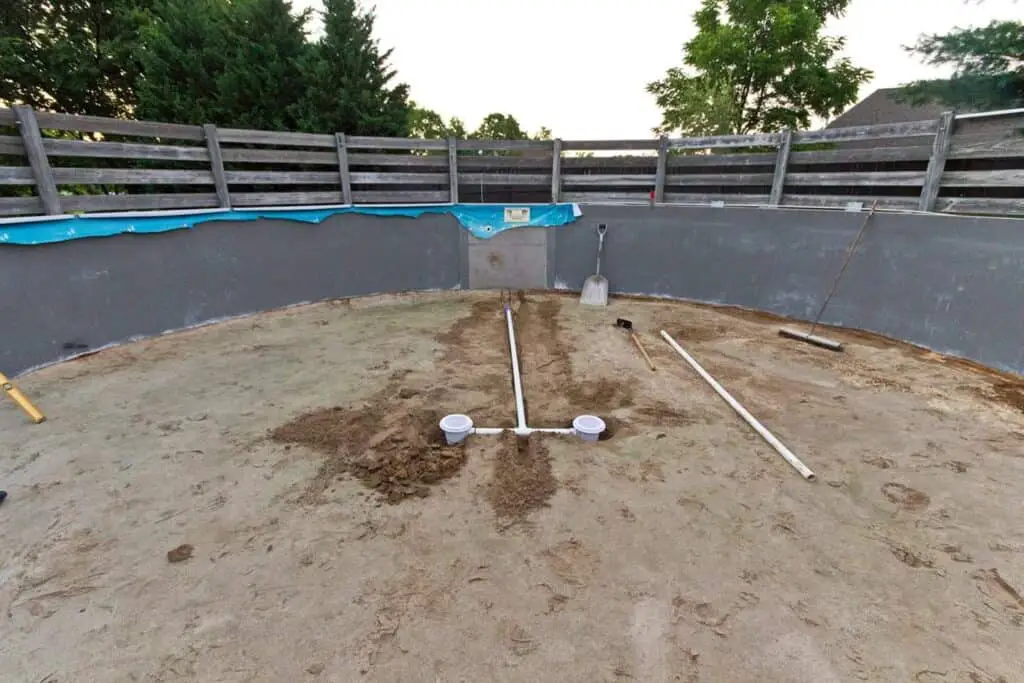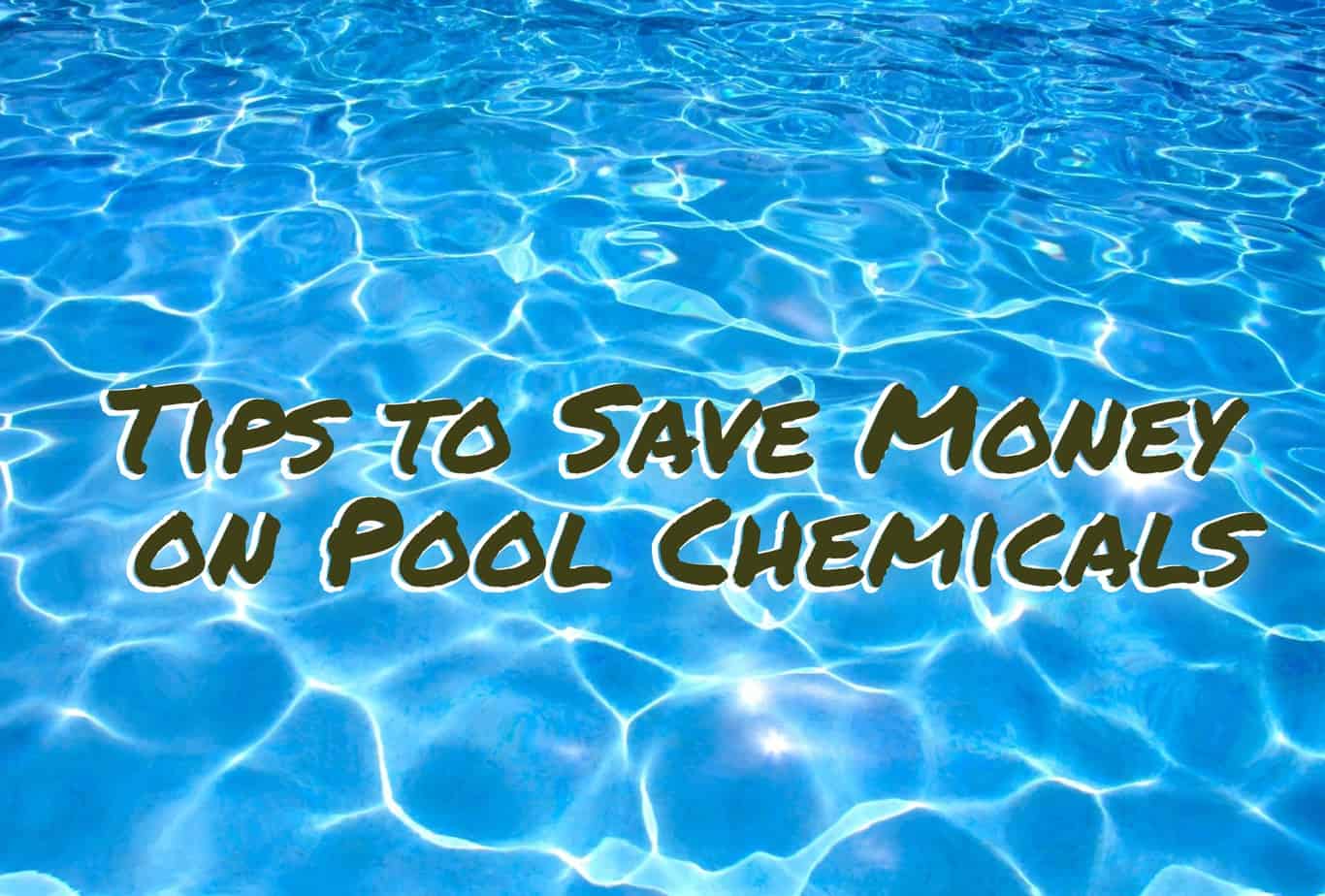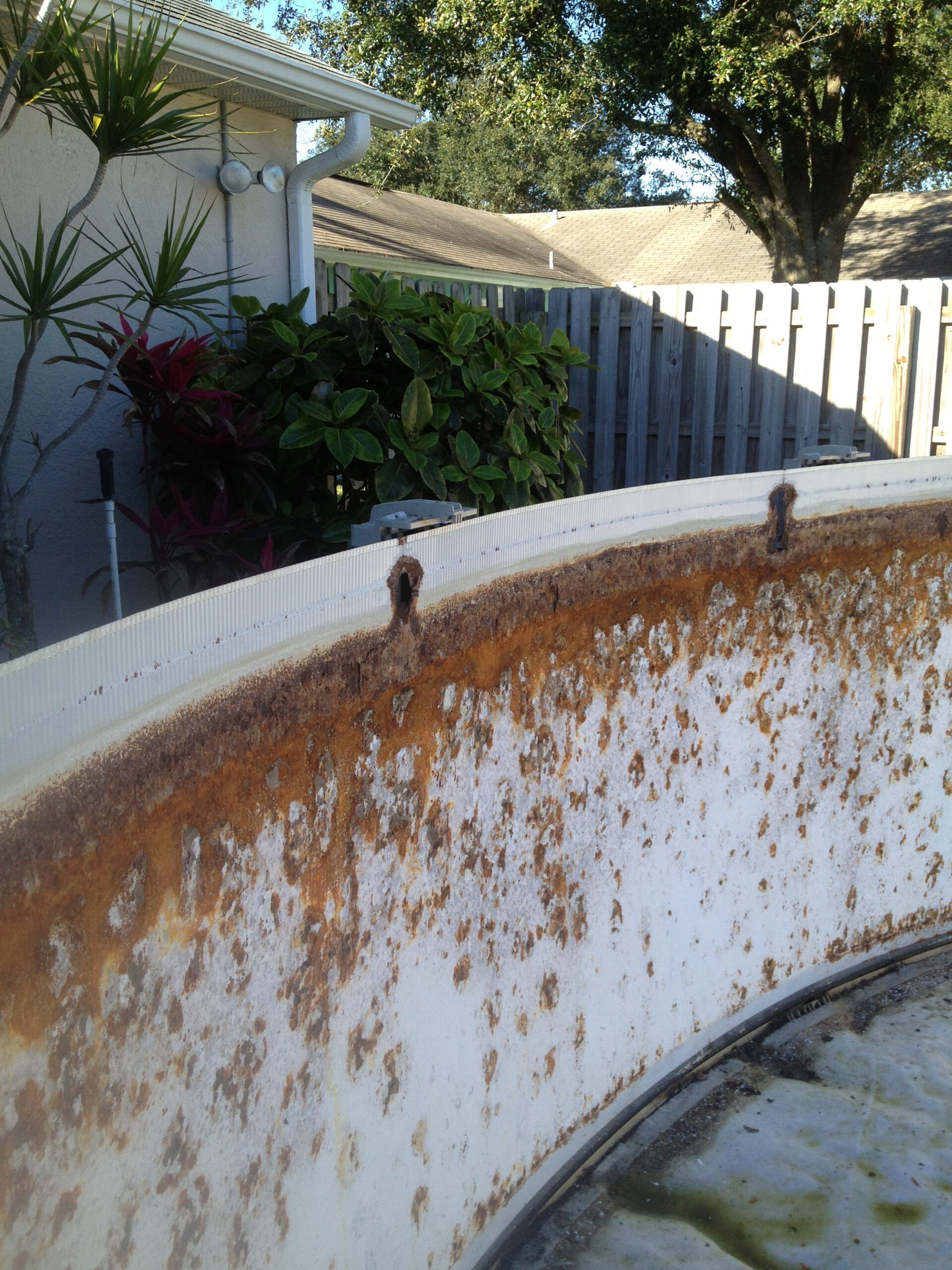With above ground swimming pools being a much less expensive alternative to inground pools, most people think that they can’t have what most inground pools have by code – a main drain. The truth is though that you can, in fact, have a main drain installed in your above ground pool. Here’s what you need to know.



WHAT IS A MAIN DRAIN?
Have you ever been in an inground swimming pool of any kind? If so, did you swim in the deep end? Remember that grate looking thing at the bottom of the deepest part of the pool? That was a main drain.
Main drains are always at the center and deepest spot in a swimming pool. It is placed at the deepest part so you can use it to completely drain all the water out of the pool. Hence the name main “drain”.
The main drain device can drain the pool because it has piping attached to it which connects it to where the pump and filter are somewhere in the yard of where the pool is located. Now, if you turn a valve on to the main drain and then turn the valve on that lets water out of the pool’s system and into the yard or street, then you can drain the entire pool. Of course, it’s not as easy as it sounds. Depending on the pool’s equipment, you may have to turn off some other valves and attach a backwash hose to run out into the street so the yard doesn’t get flooded with the exiting pool water. But that’s generally what a main drain does in terms of its name.
WHAT ELSE DOES A MAIN DRAIN DO? AND WHY DO POOLS HAVE THEM?
The primary function of a main drain is not to drain the pool. It is to help circulate the pool water. The water in swimming pools has to move around in order for the pool to stay algae free and be a healthy place to swim. This is why in-ground swimming pools have a few jets spaced all around that return the water from the filter back to the pool. They are spaced so the newly filtered water can mix evenly with the pool’s body of water.
The main drain is primarily where the pump draws the water to be filtered from, so it can then run through the filter, pick up some chemicals if there is a feeder or generator of some kind, and then return back to the pool via the jets. Now, since the main drain is at the very bottom of the pool and the jets are close to the top of the pool, the pool circulates well by the water being collected at the bottom of the pool, filtered, and then returning at the top of the pool. Make sense?
This circulation method of drawing water from the bottom of a body of water and then returning it to the top works very well and that’s why almost all inground pools have to have main drains by building code.
DO ABOVE GROUND SWIMMING POOLS HAVE MAIN DRAINS?
Above ground pools do not come with main drains and are not required by code to have them. They can be installed though and it’s a good idea.
ABOVE GROUND POOLS DON’T CIRCULATE WELL TO BEGIN WITH
If you have, have had, or just know about above ground pools, then you know that they have a skimmer (which draws in unfiltered water) at the top of the pool, and then one single return jet (which sends the filtered water back to the pool) at the top of the pool and right next to the skimmer. This is not ideal for circulation. In fact, this is quite poor for pool circulation.
With a smaller above ground pool, like say, a 15’ round, having just a skimmer and one return at the top of the pool is probably ok as long as it has a well-sized pump and filter. But the bigger above grounds in the range of 24’ to 33’ round or 15’x30’ to 21’x42’, having only this can cause poor circulation.
It has always amazed me to see some of these bigger above grounds having just the skimmer and one return and looking so clear and healthy. With that being said, you can certainly have some great success without adding any circulation to your above ground pool. To honest though, if it were my pool and it was a 27’ round or bigger, I’d have a main drain set and plumbed in it.
CIRCULATION BATTLE: MAIN DRAIN VS AUTOMATIC CLEANER
Automatic pool cleaners are excellent for pool circulation. They are good because they hook up the skimmer (pool’s inlet) and then move all over the pool attempting to pick up dirt and debris. This means that unfiltered water is being sucked up and sent to the filter from all different areas of the pool. This is about as good as circulation gets as there can be no “dead spots” where the water is not moving and being replaced with freshly filtered water.
A main drain is stationery so it can’t provide the same level of circulation. It provides excellent circulation but cannot outperform a well-operating auto cleaner.
If you just looked at these two components of circulation in only this manner, clearly the auto cleaner would be the better choice. There are more real-life situations though that will make the choice no so easy.
AUTO CLEANERS ARE PROBLEMATIC. ESPECIALLY ONES MADE FOR ABOVE GROUND POOLS
If you could take your auto cleaner out of the box, follow the directions on installing it with the proper hose length and proper suction, and then leave it to do its thing moving about the pool and sucking up the debris forever, then that would be great. The reality though, is that’s not going to happen.
As a general rule, auto cleaners for above ground pools will work well for about a year or less. Then they start to slow down or stop or get stuck around the ladder when they didn’t before. The hoses with get pinholes in them or lose some integrity and start pinching when there is too much suction.
Most AG auto cleaners are fairly simple designs, so there will only be a couple of parts in them that you can replace when the units start acting up. Sometimes, replacing these worn parts will bring the cleaner back to its early glory days of working well, but most will never be the same even if you replace every part you can. At that point, pool owners will either decide to just buy a brand new cleaner complete or just learn to have a pool without one. Most choose to live without one.
MAIN DRAINS ARE NOT PROBLEMATIC
There is really only one concern with a main drain for an above ground swimming pool. And that is if it leaks.
Above ground pools have a vinyl liner which is what holds the water in it. Generally, these liners will only have two openings within them. One is the skimmer opening (inlet) and the return (outlet). This is good because every time you make a hole in a liner, you run the risk of it leaking if not properly sealed.
Main drains make an opening in the liner, so there’s a chance for a leak. That’s a negative for sure, however, these main drains are made to be installed with vinyl liners and they have gaskets and a faceplate that screws into the unit very tightly and securely. So, as long as the main drain is installed properly, it will never start to leak later on or lose any of its performance. It will be rock solid and work just as good in five years as it did on day one. That is a major plus.
CHOOSE “NON-PROBLEMATIC” OVER “PROBLEMATIC”
In terms of circulation, the auto cleaner will do a better job than a main drain. But for how long? I have worked on above ground pools for more than three decades and can tell you that the vast majority of auto cleaners stop being used by pool owners within the first year. They then just manually vacuum the pool when it needs it and go on enjoying their pool just a little bit more than they did when they had to fuss with a temperamental auto cleaner.
At that point, when the auto cleaner is no longer being used, guess what? Yeah, it stops being a great circulator of water in the pool.
The main drain is a tank. It will be there for you, circulating the water forever and ever without you having to do anything. For me then, the clear winner in the circulation battle is the main drain. Here’s an article dedicated to main drains versus auto-cleaners
HOW A POOL MAIN DRAIN WILL HELP KEEP AN ABOVE GROUND POOL CLEAN
The majority of above ground swimming pools are round shaped. There are a good number of oval and some rectangle-shaped ones as well. Main drains will help keep all three shaped pools clean, but the rounds ones even more so.
As a general rule, main drains should go in the center of the pool. The exceptions are putting it at the other radius of an oval pool opposite of where the skimmer and return is (for better circulation), if there is a buttress strap running underneath the very center of an oval, or if there is a deep end of a round or oval pool.
For round above ground pools then, the main drain is placed in the very center of the circle. This is great for keeping the pool clean because the return jet (water going back to the pool from the filter) can be pointed to send the water parallel with the pool’s wall. This causes a whirlpool effect on the entire pool. If you don’t know what a whirlpool is, then think of a tornado in the pool swirling the water in a circular motion and heading it to the middle, like a tornado.
Now, in the middle bottom of the tornado (whirlpool) sits the main drain sucking up all the debris that is collecting there. A lot of the dirt and smaller leaf and bug debris gets sucked up and sent the pump and through the filter via the main drain line. This can mean a lot less vacuuming of the pool.
This can work with oval-shaped above grounds too, but not as well because a whirlpool effect works better in a circle. Even without a whirlpool effect, you can still brush the pool’s dirt and debris towards the main drain where it will get sucked up and filtered. And brushing dirt into a drain is easier than vacuuming.
ONE MORE REASON A MAIN DRAIN IS NICE TO HAVE IN AN ABOVE GROUND POOL
Let me first say that you should only drain an above ground swimming pool when it needs a new liner. When draining it for any other reason, the liner will begin to shrink while empty and may not start to pull off the wall or tear when trying to refill. Then you’ll need a new liner.
When you do have to drain an above ground, it can be a pain. Some will have success using a water hose and starting a siphon to drain the pool(like some of us did to get gas out of a car’s gas tank when we were teenagers). Many times though, people have to rent or have a sump pump to drain it.
If you have a main drain though, emptying the pool is super easy. You just use it to drain the pool all the way down by using the pool pump and turning off the skimmer line and sending the water out into the yard.
SUMMARY
Pros of having a main drain
- Creates much better circulation
- Outperforms an auto cleaner for circulation in the long run
- Keeps the pool cleaner when a whirlpool is created
- Makes it easier to clean the pool by brushing debris into the drain instead of vacuuming
- Makes it easy the drain the pool
Cons of having a main drain
- Cost to install or have installed
- Can leak if not installed properly
As the above ground pool knowitall, I recommend a main drain.
Be sure to read “How to install a main drain in an above ground pool” for installation information



Hi should anything be done to a main drain system when changing the liner?
If you are doing it yourself, I recommend replacing the top gasket during the liner change. Also, tape the screw holes again(just like done when originally installed). You absolutely do not want any dirt to get in the main drain screw holes. That is how they will leak later.
Hi, just came across your article in a google search. Very informative! Brand new pool owner, we just had a 24’ above ground installed a month ago and my question is, is there any way to test the main drain to ensure it is working?
Ours has a system that has 2 drains on the bottom and I cannot feel any suction at all coming from the main drain when the filter is on. Perhaps this is a safety thing? I also don’t see any debris on the bottom of the pool moving toward the drain as I would expect that it would. Just curious on your thoughts and if there is a way to test it?
Hi. To check to see if the main drains are working, you’ll want to close off the skimmer line which will dedicate the main drain line. Turn on the pump and if water is pulling through, then the drains must be working.
If I have an above ground pool already installed without a main drain, can I have a main drain installed later? If so, what’s the process?
Yes you can. I suggest doing it when the time comes to change the liner. Here’s an article on how to install a main drain https://abovegroundpoolsknowitall.com/how-to-install-a-main-drain-into-an-above-ground-pool/
Does installing a main drain void liner warranty?
I have never heard of that, so no.
Hi Dan,
Good article! I curious where you got the info that above ground pools are not required by code to have main drains. That info would be great to have to shorten the conversation I’m having with my local city people!
It’s not where I got that info so much as where that info isn’t. There is no building code that I know of that requires an above ground swimming pool to have a main drain.
That said, any local building department can make any rule that they want. Usually though, their farcical demands have to do with safety, not circulation.
Indeed, Dan! Thank you!
If getting a center drain , in my new 21’ round above ground pool, must I get 2 center drains installed because of the VGBA law?
I think this is up to you. I only install one drain as there’s just not enough suction in an above ground pool. To my knowledge, no one has been entrapped by a main drain in an above ground pool. Some will want me to install two drains and I will, but don’t think it’s at all necessary.
I’m curious to your thoughts on me piping in my Intex 12’x 24’ auxiliary drain to the pvc suction pipe I installed. It is a small drain port (3/4”) located 3” off the bottom of pool on the far side. It has a male hose adapter on it which I could convert and run 1” pvc, and tie into the 1 1/4” pvc pipe already installed. Thanks!!
I don’t see any issues providing it doesn’t leak.
Will an above-ground pump work with a main drain or do I need to purchase an inground pump? And are their any advantages to installing an inground pump?
Yes an above ground pool pump it will work fine with a main drain.
The only advantages an inground pump has is that it will last longer AND you can just change the motor(leaving the pump the same). Inground pumps cost a lot more though to purchase and you have to hard-wire them along with usually having to PVC plumb them with the filter.